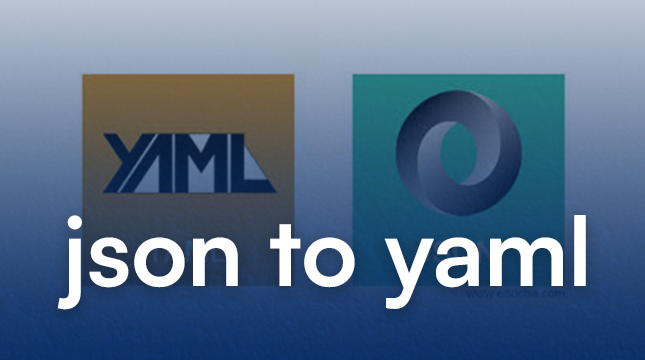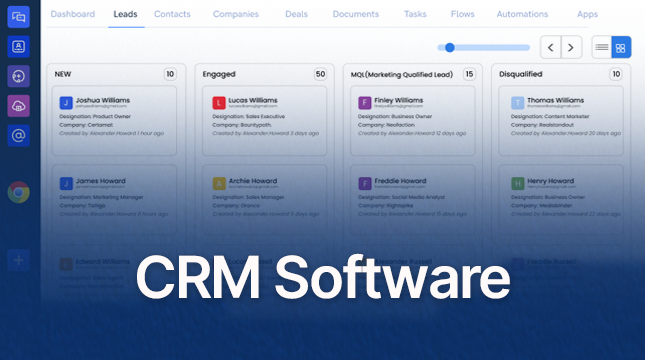This website uses cookies so that we can provide you with the best user experience possible. Cookie information is stored in your browser and performs functions such as recognising you when you return to our website and helping our team to understand which sections of the website you find most interesting and useful.
Conquering Configuration Chaos: JSON to YAML Conversion Made Easy

Ever felt like your configuration files are speaking a different language? Imagine working with data in JSON format, a widely used method for exchanging information, but then needing to use that data for configuration purposes, a domain often dominated by YAML. This is where JSON to YAML conversion comes in, acting as the bridge between these two data giants.
Unveiling the Data Duo: JSON and YAML
Before diving into conversion methods, let’s meet the key players:
-
JSON (JavaScript Object Notation): Think of JSON as a lightweight and human-readable format for data exchange. It structures data using key-value pairs and nested objects, making it perfect for transmitting information between applications and servers.
-
YAML (YAML Ain’t Markup Language): While YAML might sound like a strange name, it excels at configuration management. It uses indentation and a simple syntax to define data structures, offering a more readable and maintainable alternative to plain text configuration files.
Why Convert Between JSON and YAML?
While both formats excel in their respective areas, there are situations where conversion becomes necessary:
-
When YAML Reigns Supreme: You have existing JSON data that needs to be used for configuration purposes. YAML’s focus on readability and maintainability makes it ideal for managing complex configurations.
-
When JSON Takes the Crown: An application or service requires data in JSON format, but your configuration files are currently stored in YAML. Conversion allows you to leverage your existing configurations within the new system.
Read More : JSON Validator
Translating the Tongues: Methods for JSON to YAML Conversion
There’s no single “best” method for JSON to YAML conversion. The approach that suits you depends on your needs and preferences. Here are some popular options:
- Online Converters: Quick and Convenient
For one-off conversions or small data sets, online converters offer a user-friendly solution. Simply paste your JSON data into the input field, click convert, and voila! Popular options include JSON Formatter and BairesDev.
- Command Line Tools: Powerful Precision
For more control and automation, command-line tools like jq offer a powerful solution. jq is a lightweight and versatile JSON processor that can be used for various tasks, including conversion to YAML.
- Programming Language Libraries: Built-in Functionality
Many programming languages provide libraries specifically designed for working with JSON and YAML data. For instance, Python’s PyYAML library offers a robust set of features for seamless conversion between the two formats.
Navigating the Conversion Maze: Essential Considerations
While conversion itself might seem straightforward, there are a few key things to keep in mind:
-
Preserving Data Integrity: What Stays and What Goes? Not all JSON features have direct equivalents in YAML. Comments present in JSON might not be preserved during conversion. Be mindful of potential data loss and adjust your conversion approach if necessary.
-
Formatting Finesse: Indentation and Readability YAML relies heavily on indentation for defining data structure. A single space misplaced can completely alter the meaning of your configuration. Ensure your converted YAML adheres to proper indentation for optimal readability and functionality.
-
Understanding YAML’s Unique Syntax While YAML borrows some elements from JSON, it has its own quirks. Familiarize yourself with YAML’s specific syntax for comments, anchors (references to existing data elements), and multi-line strings to ensure your converted data functions as intended.
Unveiling the Benefits: What You Gain from Conversion
There are several advantages to be reaped from mastering JSON to YAML conversion:
-
Enhanced Readability for Human Eyes: YAML’s focus on indentation makes it easier for humans to understand configuration files compared to raw JSON. This improved readability translates to simpler maintenance and troubleshooting.
-
Streamlined Configuration Management: By leveraging YAML for configurations, you can benefit from its ability to define complex structures and relationships between data elements. This leads to more organized and manageable configuration files.
-
Improved Integration Across Tools and Technologies: Many tools and technologies natively support YAML for configuration purposes. Conversion allows you to leverage existing JSON data across a wider range of applications and platforms.
Putting It All Together: A Practical Conversion Example
Let’s solidify our understanding with a hands-on example:
- Sample JSON Data:
JSON{ "name": "My Website Configuration", "server": { "host": "example.com", "port": 8080 }, "database": { "type": "MySQL", "connection": { "host": "localhost", "user": "username", "password": "password" } } }- Converting with an Online Tool:
Head over to an online converter like JSON Formatter (https://www.lambdatest.com/free-online-tools/json-to-yaml) or BairesDev (https://github.com/mikefarah/yq/issues/1608). Paste your JSON data and click convert. You’ll receive the equivalent YAML representation.
- Performing Conversion via Command Line (
jq):
Open your terminal and navigate to your JSON file location. Use the following command, replacing
your_file.jsonwith your actual file name:jq . your_file.json > your_file.yamlThis command utilizes
jqto process your JSON file and output the YAML equivalent to a new file namedyour_file.yaml. -
-
Conclusion
By mastering JSON to YAML conversion, you unlock a powerful tool for bridging the gap between data exchange and configuration management. With the right approach and tools, you can seamlessly leverage your data across various applications and platforms, streamlining your workflows and enhancing the maintainability of your configurations. So, the next time you encounter a need to convert between JSON and YAML, remember the methods and considerations outlined here, and embark on your data conversion journey with confidence!

Let's Start Your Project
Get free consultation for your digital product idea to turn it into reality!
Get Started






